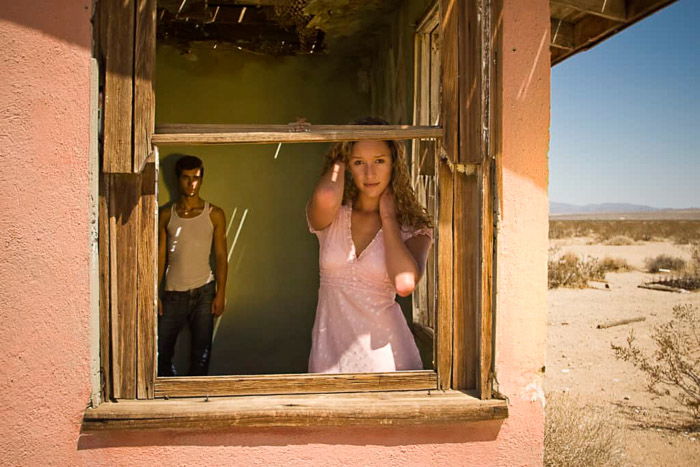If you’re building your photography career, you should look into hiring models to work for TFP.
It’ll help both you and the model build your portfolios. This applies whether you’re looking to do fashion photography, family portraits, or weddings. You’re going to need a portfolio to show potential clients.
Here are the best ways to find the perfect TFP models to work with on your next project.
TFP work can be the perfect solution to portfolio-building. You only have to invest your time and energy but minimal (if any) money. Looking for a team to work with you on TFP work can seem daunting, though.
TFP stands for “time for print” or “time for portfolio”. Both you and the model are in it to create amazing images that will enhance everyone’s portfolios. It’s the perfect solution when you don’t have clients paying you to photograph them yet.
The advantages of working on a TFP basis go beyond images for your portfolio. It involves finding a model, collaborating on a vision, and then the photo shoot itself. This is a great learning process. It will make you better prepared when working with paying clients.
Also, doing TFP projects can help you grow your photography network! You’ll get to know models, make-up artists, hair stylists, and wardrobe stylists.
You can then use them in paying projects or recommend them to others. And they will now know you and can recommend you to others as well!

Doing TFP work doesn’t mean snapping a few photos for kicks. It’s real work you need to treat as you would any other paying client.
Also, keep in mind that the models are also looking to work with a legitimate, professional photographer that is legitimate.
You’ll want to present yourself like you would to a client. This means having a professional website, even if it’s a basic landing page.
This also means gathering your best work samples to show off. Even if the photos are not of exactly the type of work that you’re looking to do with the model.
Finally, be respectful and courteous when communicating with potential models. They’ll know they can trust you and that you’re going to take the project seriously.
So you have a fantastic idea for a photo shoot and a website all set up. This doesn’t mean that models will appear out of nowhere in your inbox.
You need to go to where the models are. If you live in a large city, chances are that using local websites will get a fair amount of responses. Model Mayhem is great for casting projects, whether paid or TFP.
Facebook also has lots of groups to join, usually for your specific city. Creatives of all types can connect for projects of all kinds. Craigslist also offers lots of opportunities to connect, too!
As with all online connections, use common sense when communicating with strangers. This means not giving out personal information. And meet in person at a public location before committing to begin a project together.

For TFP work, you’ll want to have a clear vision of the project you’re proposing. This means having goals, inspirational images, and specific props you may want to use. Even certain location and wardrobe for the photos are a good idea.
Being prepared will help you look more professional to the models. It’ll also help both parties know if it’s a good fit.
For example, you may want to do a high fashion shoot in a gritty location like a warehouse. But the model you’re talking with is looking for a soft and feminine shoot in an open field at sunset.
You might still work with the model at some point in the future. But having a clear vision helps to know that right now your goals don’t align.
On the flip side of this is the fact that you should stay open to collaborative ideas. When you work with other professionals, everyone involved should have input.
Your high fashion shoot in a gritty warehouse may end up happening in an urban alley full of graffiti.
The point is to maintain your overall goal. But still give everyone involved a voice in the details.
We’ve touched on this a bit already. It’s important to screen the models you talk with to make sure that they’re a good fit for your project.
If you’re looking for a plus-size female with blonde hair and fair skin, be open about that. Consider whether the look of the model you’re speaking with will still work with your vision.
A model might not be a good fit for your immediate project. But this doesn’t mean that you won’t collaborate at some point in the future!
Sometimes finding a model that’s a good fit for your photo shoot will take a bit of time. Be patient and keep interviewing until you find the model for you.

When it comes to TFP work, the goal are the final images to build up portfolios. As the photographer, you will edit the photos to meet the vision. And then deliver the images to everyone involved.
Be sure to deliver final photos by the deadline you agreed to and in high resolution. That way they can use them on different media. If there’s any delay, be sure to reach out to your model, as well as any other team members involved. Let them know when they can now expect photos.
Your professionalism will make models more likely to want to work with you again.
It’s always tough to begin building a portfolio before you have paying clients.
Finding a model (or several models) to do TFP shoot is ideal. You’ll create the kind of work that you aspire to get paid for in the future. TFP work helps you to build your network of professionals for that type of work!
Using the tips above, you’ll be prepared to work with TFP models time and time again.